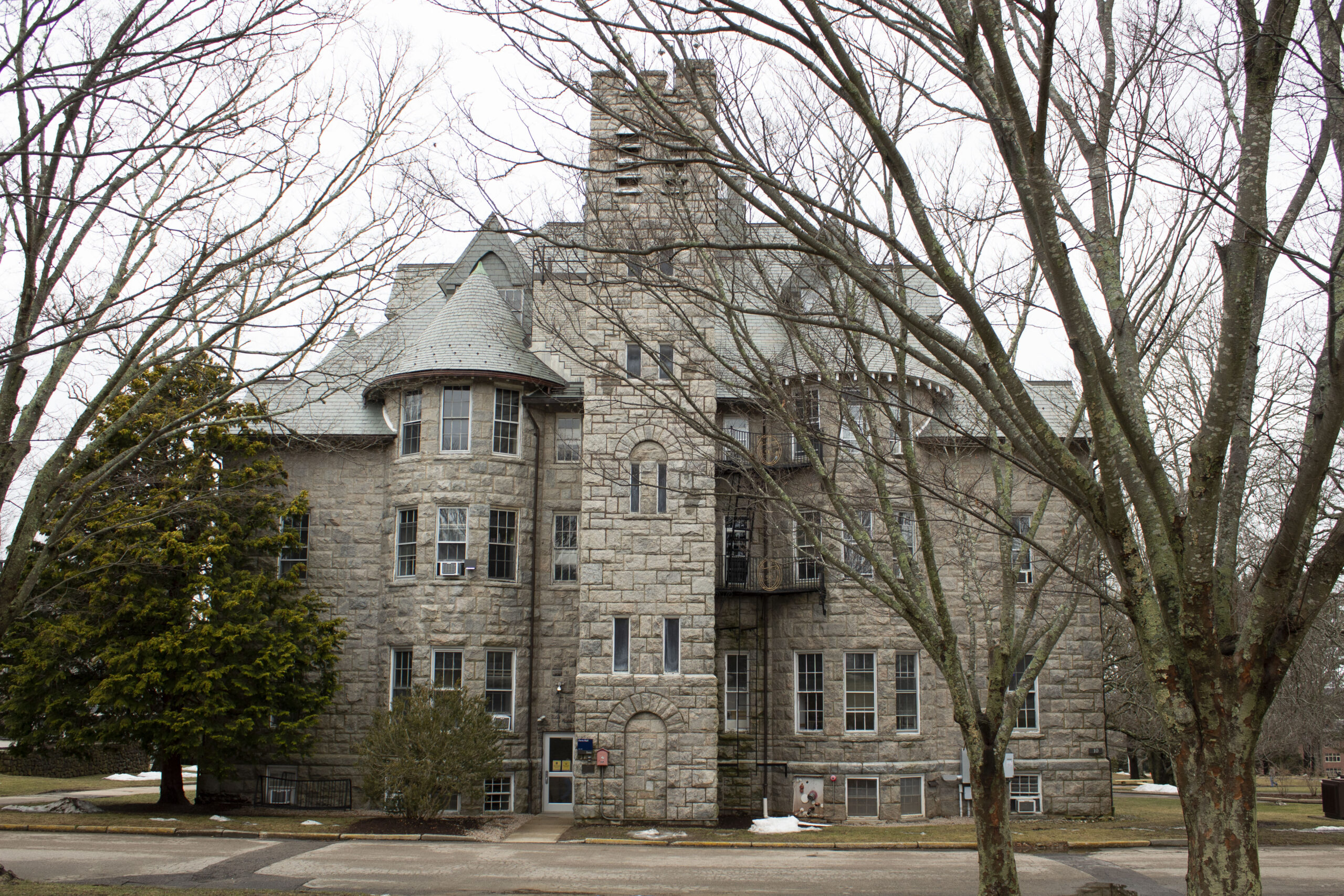Davis Hall, which predates the University of Rhode Island’s name, has served many purposes since 1892. PHOTO CREDIT: Hannah Charron | Staff Photographer
Many buildings at the University of Rhode Island hold historical relevance, but Davis Hall is quite literally built on campus history.
College Hall, a dormitory which stood where Davis is currently, was one of the first buildings built at the then Rhode Island College of Agriculture and Mechanical Arts when it opened in 1892. According to Catherine DeCesare, a professor of history at the university, in 1895, a fire started in one of the students’ closets, burning College Hall to the ground.
“Davis Hall was actually built on top of College Hall,” DeCesare said.
Now Davis Hall, named after former Governor John Davis, stands in its place. The building’s castle-like design holds true to the original building design of College Hall.
The building was constructed with help from the students, who took away some of the rubble from the burnt down building, helping them construct the new building on the foundation left.
Throughout the years, Davis Hall has held many different uses.
“It was a multi-purpose building,” DeCesare said. “They used it for a whole bunch of different things, part of a library, and people lived there.”
When the hall was built in 1895, there were very few buildings on campus. Taft Hall and the Watson House, the old white house on Farmhouse Road that existed on the farm land prior to the college being built, were some of the only buildings occupying the campus.
The building even predates the quadrangle, which is why its front entrance is located away from the quad, unlike many of the other buildings on the green’s perimeter.
“The first principal of this school, John Washburn, hence the name ‘Washburn Hall’, he’s going to envision this open green space having buildings around it,” DeCesare said.
The building has been used for many things over time. The hall has been used as a men’s dormitory, similar to the use of College Hall when it burned down, and a women’s dormitory prior to the construction of Roosevelt Hall, as well as a library. During World War II, the building held a very important job on campus.
“[The] University had a close tie with the military during World War II,” DeCesare said. “During this time, Davis served as the headquarters for the military department on campus.”
Now, Davis Hall once again finds itself in a different use — administration. Davis Hall is home of the communications department offices for the Harrington School of Communications and Media and holds the offices of nearly all of the Communications faculty.
“We like working here,” Harrington School Coordinator Ann Salzarulo-McGuigan said. “They tell me it used to be a door, it used to be the foundation. It has a long history of many different occupants.”
The building still continues to attract people from around the campus community. For instance, the paranormal club on campus gets readings of ghosts in Davis, one of the oldest buildings on the campus.
The building still has its fire escape as well, which is not allowed to be used for safety concerns, but has a view of the campus from its fourth floor.
“It’s a great view,” Salzarulo-McGuigan said. “If you go up to the fourth floor and look out of the tower you can see the whole central part of the campus.”
While the campus has grown far behind a tiny farm school in Kingston, Davis Hall has remained as one of buildings that connects the school to its past.

